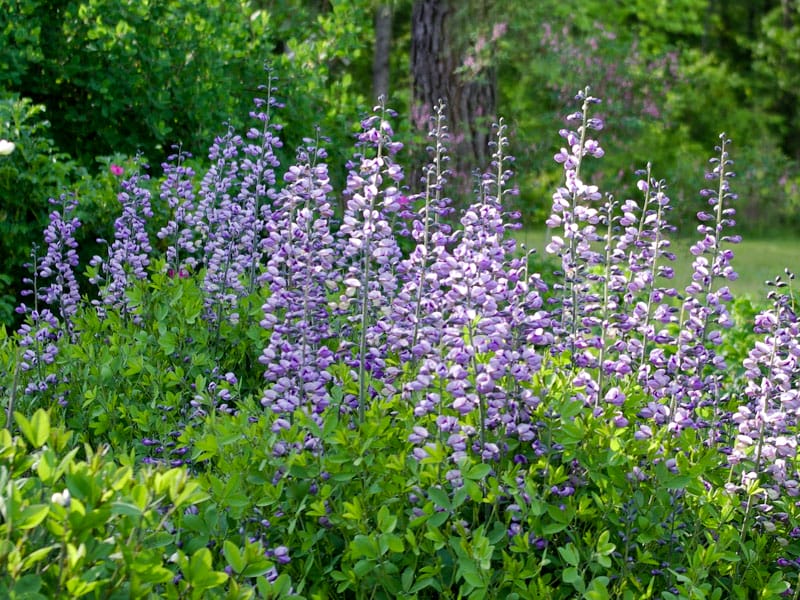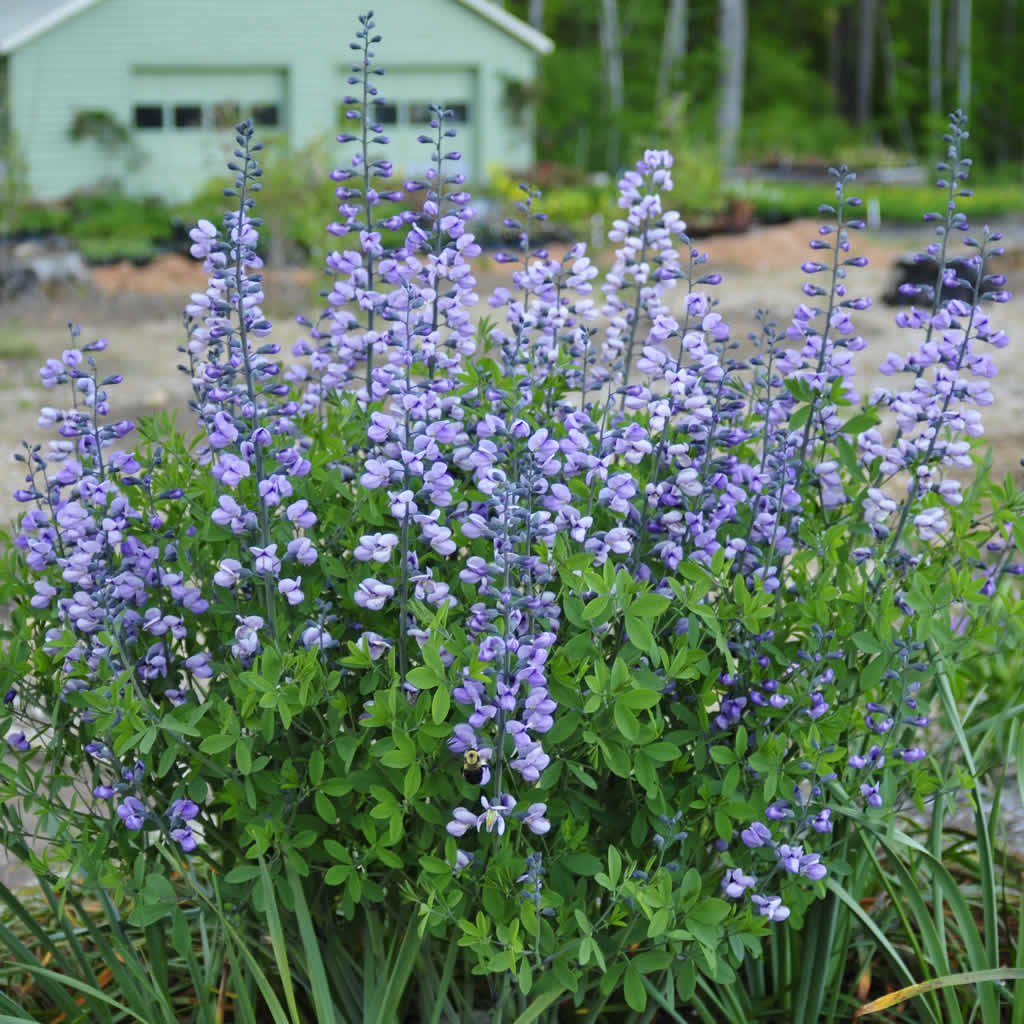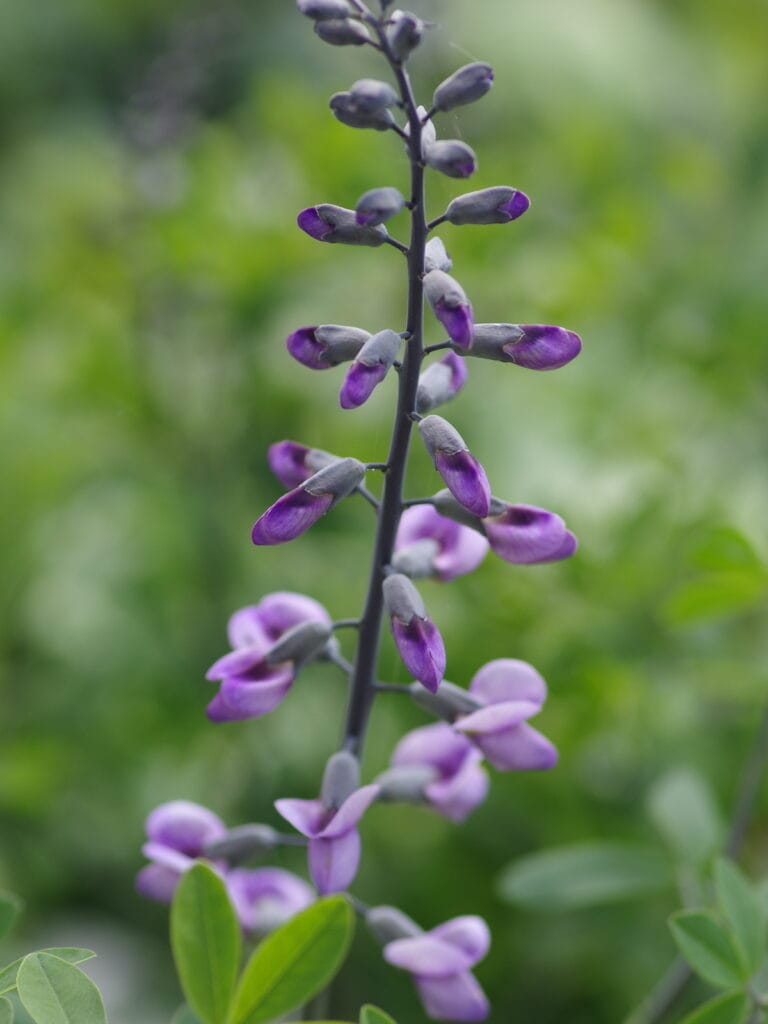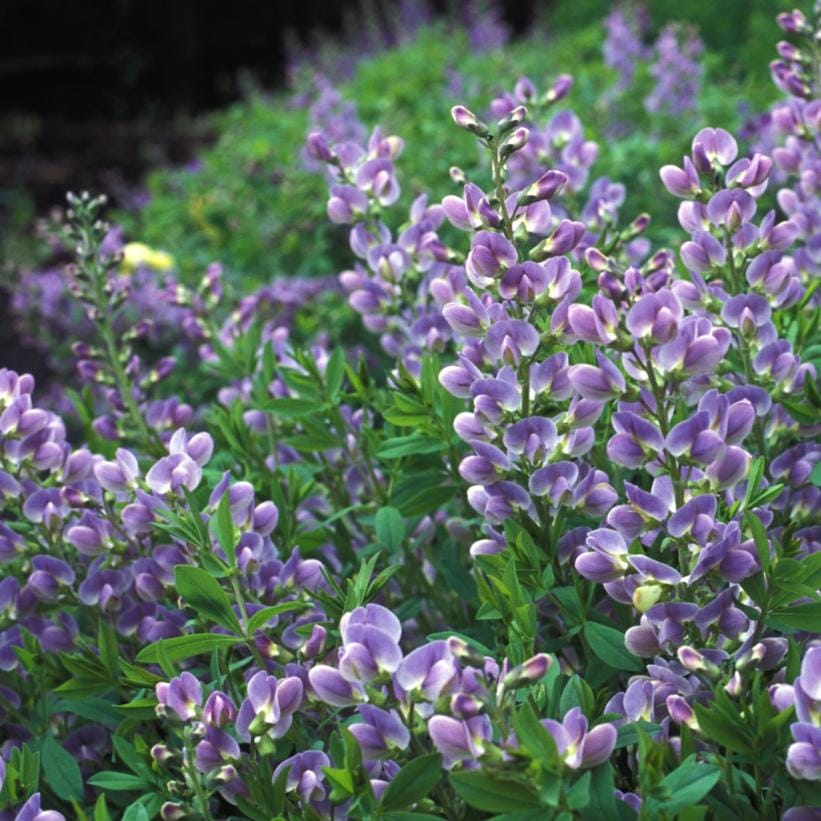Landscaping Ideas
Purple Baptisia
By Innovation Grounds
The Purple Baptisia (Baptisia australis), commonly known as Blue False Indigo, is a perennial plant native to North America. It’s a member of the legume family and is known for its striking blue-purple flowers and distinctive foliage.
General Information
- Common Names: Purple Baptisia, Blue False Indigo, Wild Indigo.
- Scientific Name: Baptisia australis.
- Family: Fabaceae (Legume family).
- Origin: Native to the central and eastern parts of the United States.
- Hardiness Zones: USDA Zones 3–9.
- Growth Habit: Upright, clumping perennial.

Growing Conditions
- Sunlight: Full sun (at least 6 hours per day). It can tolerate light shade but will bloom best in full sun.
- Soil: Well-drained, slightly acidic to neutral soil, though it is fairly adaptable. It is drought-tolerant once established, as it has deep roots.
- Watering: Regular watering when first planted, but once established, Baptisia is highly drought-tolerant and does not require much water. Be cautious of overwatering.
- Soil Type: Tolerates a variety of soil types, from clay to loamy soil. Prefers dry to moderately moist conditions but does not like wet feet.

Care and Maintenance
- Fertilization: Minimal need for fertilizer. If needed, use a balanced, slow-release fertilizer in early spring. Over-fertilizing may result in less flowering.
- Pruning: Prune in early spring to remove dead or damaged stems, or cut back after blooming to tidy the plant. Baptisia does not require frequent pruning.
- Mulching: A light layer of mulch around the base can help conserve moisture during the summer but avoid piling it directly against the plant’s stem.

Benefits and Uses
- Wildlife: Attracts pollinators such as bees and butterflies. It’s also resistant to deer and rabbits.
- Landscape Uses: Ideal for garden beds, borders, or naturalized areas. It works well in prairie or meadow plantings.
- Cut Flowers: The flowers can be used in cut arrangements, though they don’t last as long as other blooms.
- Companion Plants: Pairs well with other sun-loving plants such as coneflowers (Echinacea), black-eyed Susans (Rudbeckia), and ornamental grasses.

Additional Tips
- Slow Growth: Baptisia is slow to establish but once mature, it’s very low-maintenance and long-lived, often lasting for decades in the garden.
- Attractive Seed Pods: Even after flowering, the seed pods create visual interest in the garden and provide winter interest once dried.
- Replanting: It’s important to note that Baptisia does not like to be moved once established due to its deep root system.


